Once inside the hotel, we could feel ourselves immersed in a traditional Chinese environment. The hotel is not very big, but it is well decorated, from its walkway to the interior room design. The furniture, bed and decorations in the room are all based on traditional Chinese theme. Yet the owner has integrated well with the modern facilities like TV, air-con and lighting.
By the time we settled down, it was already close to 3.00pm. We had only planned for one visit to a major attraction, which was the Temple of Heaven (天坛). The Temple of Heaven (天坛) is a place where the Emperors of Ming and Qing dynasties performed ceremonies of worship to the heaven for good harvest. The Temple of Heaven (天坛) consists of several buildings located in a huge park. We left the hotel and made our way to Tiantandongmen Station (天坛东门) from Andingmen Station (安定门). From the Tiantandongmen Station (天坛东门), it was just a short distance to the East Gate ticket office, which we purchased the through tickets (which allowed entrance to all attractions within the park).
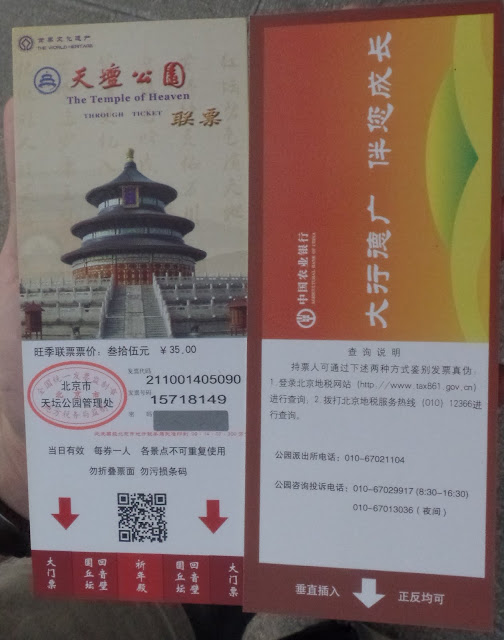 |
| Through tickets to Temple of Heaven |
We entered the park via the East Gate and then walked through the Seventy Two Long Corridor (七十二长廊) towards the main attraction Hall of Prayer of Good Harvests (祈年殿). Along the corridor, we could see many elderly locals spending their time here chatting and playing cards. At the Hall of Prayer of Good Harvests (祈年殿), we could see the majestic circular hall on top of the 3 layered marble terrace. The hall itself has 3 layers of blue colour eaves and the entire building is made of wood only.
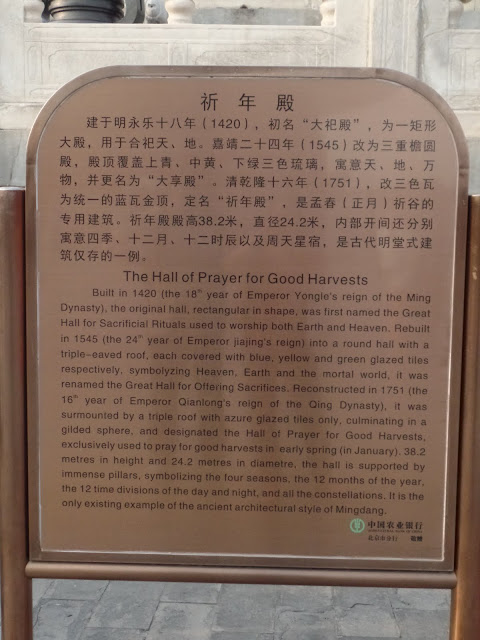 |
| Introduction of the Hall of Prayer of Good Harvests |
 |
| View of Hall of Prayer of Good Harvests |
 |
| Interior view of Hall of Prayer of Good Harvests |
Walking further north of the Hall of Prayer of Good Harvests (祈年殿), we could find the Imperial Hall of Heaven (皇乾殿) that is meant to house the God tablet.
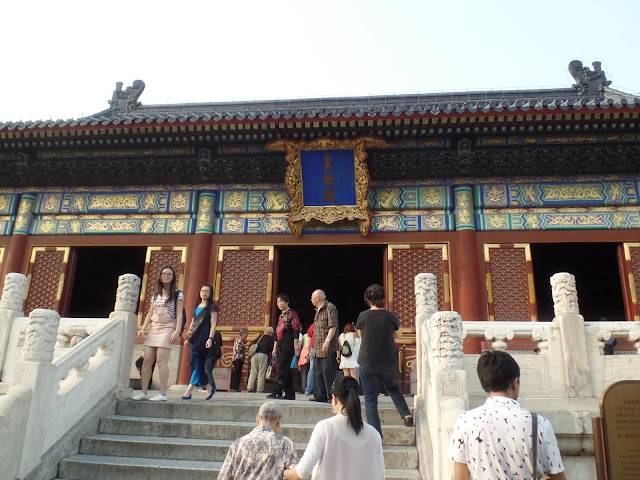 |
| Imperial Hall of Heaven |
 |
| Interior view of Imperial Hall of Heaven |
After this, we walked southwards along the raised walkway known as the Vermilion Steps Bridge (丹陛桥). At the end of the walkway, we arrived at another smaller circular building called the Imperial Vault of Heaven (皇穹宇).
 |
| Vermilion Steps Bridge |
This is the place where the imperial ancestral and God tablets are housed. The Imperial Vault of Heaven (皇穹宇) is enclosed by the Echo Wall (回音壁), which was intelligently designed to allow people located at opposite end to communicate to one another, due to the smooth passing of sound waves.
 |
| Introduction of Imperial Vault of Heaven |
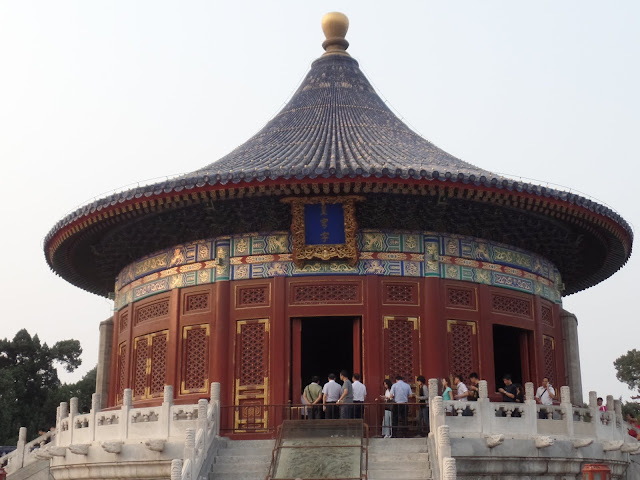 |
| Imperial Vault of Heaven |
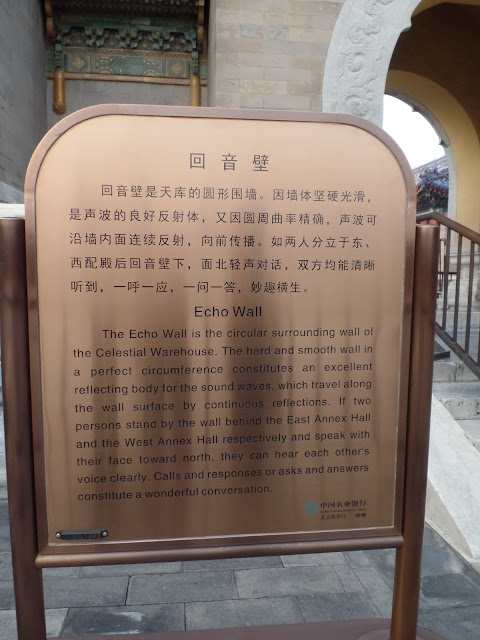 |
| Introduction of Echo Wall |
Further south of the Imperial Vault of Heaven (皇穹宇) is the Circular Mound Altar (圜丘坛), which is a 3 layered marble terrace with an open top. At the centre is the round Heavenly Centre Stone (天心石), which is known to resonate sound made from that location. Near the platform, we could also see the huge firewood stove used to cook animal sacrificial for the worshiping ceremonies.
 |
| Introduction of Circular Mound |
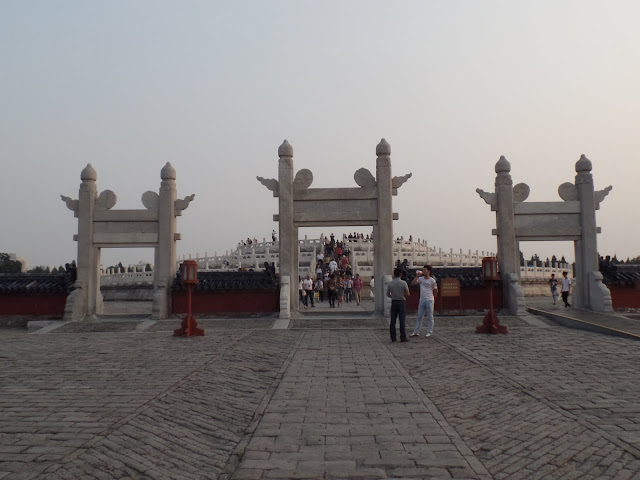 |
| Entrance to Circular Mound |
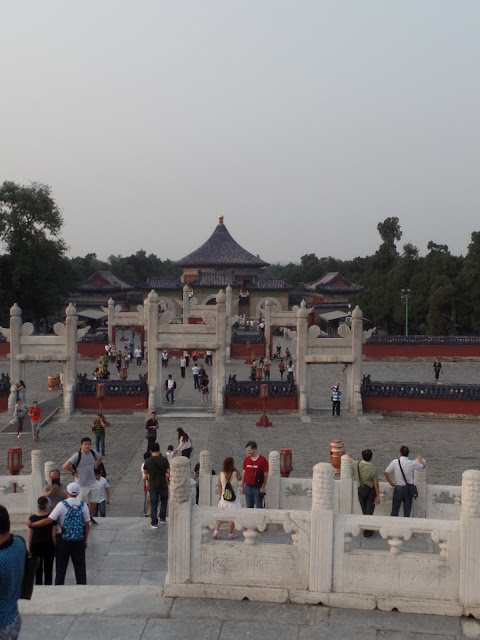 |
| View of the Imperial Vault of Heaven from Circular Mound |
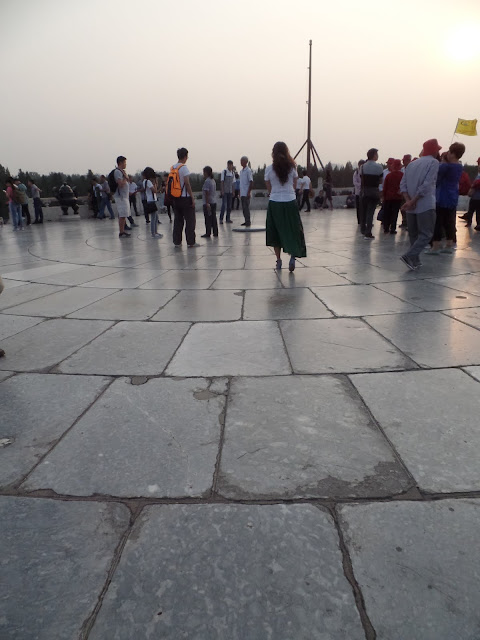 |
| View at the top of Circular Mound |
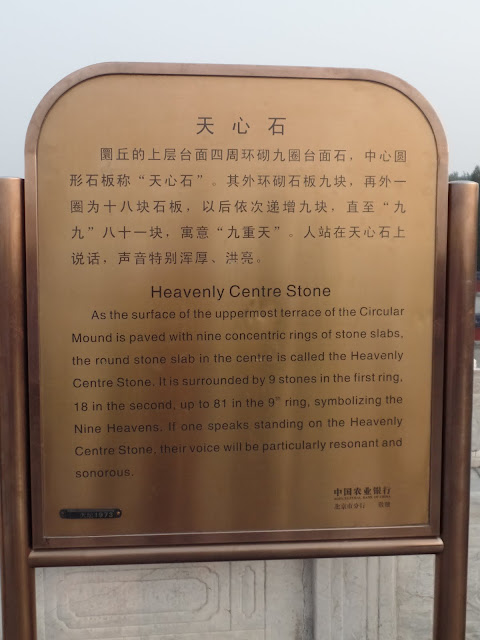 |
| Introduction of Heavenly Centre Stone |
It was already late in the evening and close to the closing time. We made our way back to the East Gate, where we passed by the Seven Star Stones (七星石). There were originally seven large stones to symbolise the seven peaks of Mount Tai, but one more was later added by Qing Emperor Qianlong (乾隆皇帝) in the northeast direction, to signify the addition of the Manchurian clan as part of the complete Chinese nation.
 |
| Introduction of Seven Star Stones |
 |
| Seven Star Stones (Now there are eight stones) |
Silk Street (秀水街)
We exited the Temple of Heaven (天坛) and went to Silk Street (秀水街) by taking the MRT from Tiantandongmen Station (天坛东门) to Yonganli Station (永安里), which is directly linked to the
Silk Street (秀水街). We first had our dinner at one of the restaurant located opposite of Silk Street (秀水街) selling Taiwanese braised meat rice set before the shopping.
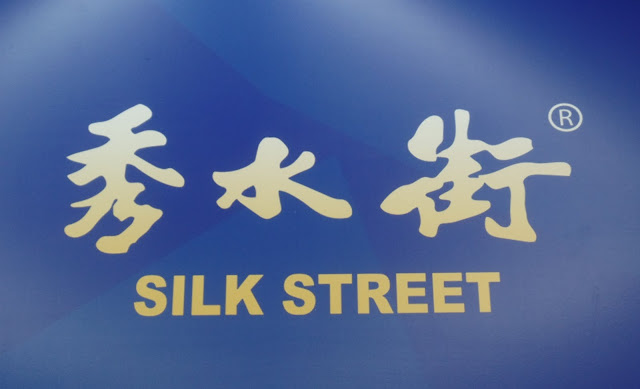 |
| Logo of Silk Street |
The Silk Street (秀水街) is now no longer a street, but a 6 storey high modern shopping mall. It is a very popular shopping area for tourists, where there are many retail shops selling different products like clothing, handbags, shoes, children toys, electronics, cosmetics, jewelries, antiques, souvenirs and the most popular being silk, which the place got its name. Personally I found the things sold here were overpriced, even after taking account the discounts from some hard bargaining. Eventually we only bought some souvenirs and spent most of the time window shop around the mall. After this, we took the MRT back to the hotel to call it a day.
Follow the links below to the other days of my China tour:
Day 1: Beijing (Yonghe Lama Temple, Shizhahai, Prince Gong Mansion, Behai Park, Gui Jie)
Day 2: Beijing (Tiananmen Square, Forbidden City, Old Summer Palace, Wangfujing)
Day 3: Tianjin (Italian Style Town, Nanshi Food Street, Drum Tower, Ancient Cultural Street, Quanjude Peking Roast Duck)
Day 4: Xi'an (Muslim Street, Drum Tower, Bell Tower, Xi'an City Wall, Defu Alley)
Day 5: Xi'an (Terracotta Army Museum, Da Ci'en Temple, Big Wild Goose Pagoda, Tang Paradise)
Day 6: Huashan
Day 7: Beijing (Temple of Heaven, Silk Street)
Day 8: Beijing (Great Wall - Badaling, Ming 13 Tombs - Ding Ling, Shizhahai)
Day 9: Beijing (Summer Palace)




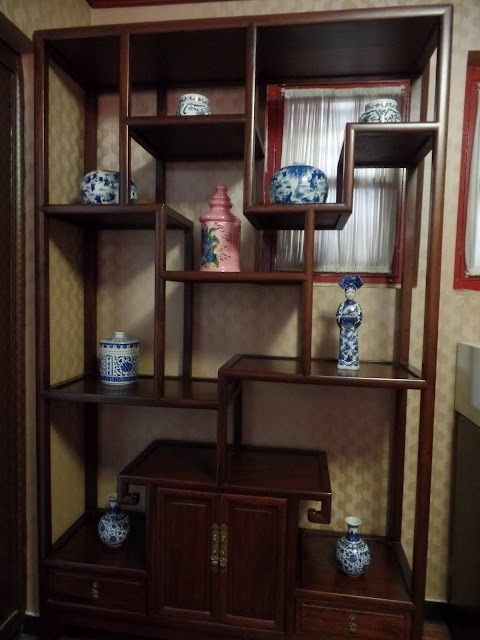
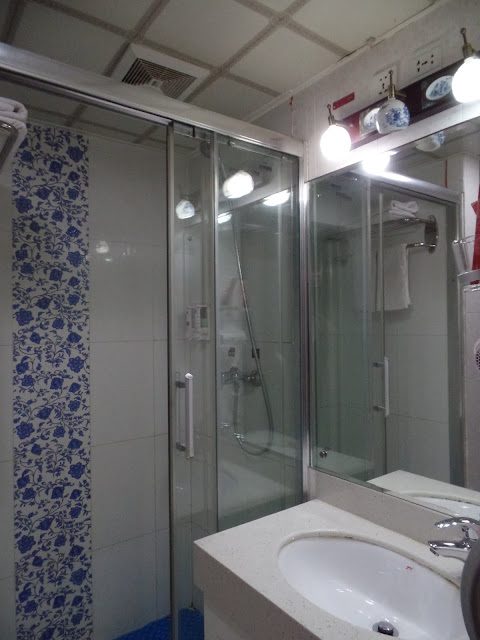


















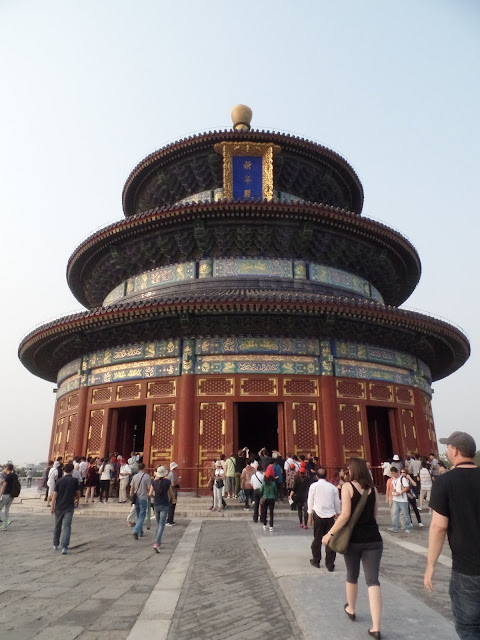
No comments:
Post a Comment